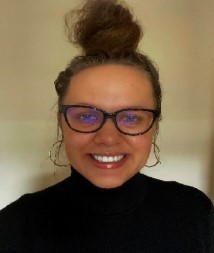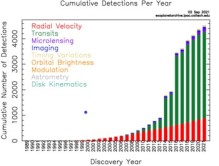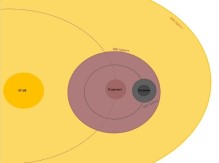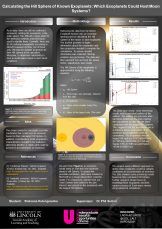By Roksana Kulengowska //
 Out of over 4000 currently discovered exoplanets, there are still no confirmed exomoons. The existence of exomoons is theorised until this day due to the detection methods being biased—this project aimed to carry out calculations that would present exoplanets with the largest Hill Sphere. Moreover, showing the distribution of exoplanets with suitably large Hill Sphere. This would suggest that they could capture smaller terrestrial planets.
Out of over 4000 currently discovered exoplanets, there are still no confirmed exomoons. The existence of exomoons is theorised until this day due to the detection methods being biased—this project aimed to carry out calculations that would present exoplanets with the largest Hill Sphere. Moreover, showing the distribution of exoplanets with suitably large Hill Sphere. This would suggest that they could capture smaller terrestrial planets.
The Hill Sphere provides an overview of the area around an object where other smaller objects are gravitationally bound. For an exomoon to be preserved by the exoplanet, it would have to lie within the exoplanet’s Hill Sphere; otherwise, it would experience perturbations from its parent star. The image below shows a visual representation of the Hill Sphere. 
To provide the calculations necessary, data extraction took place from the NASA Exoplanet Archive. The archive holds mandatory properties needed to carry out the calculations. This process appeared to be more challenging than initially anticipated due to the lack of experience with the archive. After further research and a follow-up with my supervisor, I had successfully obtained the data.
 Another obstacle faced during this project was the importance of the conversion of the units. At first, I did not realise that the mass of the star and planet did not have the same units. This is a crucial step to consider before starting the calculations as it will provide inaccurate computations regarding the exoplanets Hill Sphere. Following the realisation of such a mistake, corrections were made, and I recalculated the Hill Spheres, allowing me to create the plots distributing the results collected.
Another obstacle faced during this project was the importance of the conversion of the units. At first, I did not realise that the mass of the star and planet did not have the same units. This is a crucial step to consider before starting the calculations as it will provide inaccurate computations regarding the exoplanets Hill Sphere. Following the realisation of such a mistake, corrections were made, and I recalculated the Hill Spheres, allowing me to create the plots distributing the results collected.
The setbacks encountered allowed me to understand how complex the research can become and its duration to obtain the desired data. A positive mindset and ongoing support from my supervisor allowed me to grow and develop as an individual and further encouraged my desire of going into the astrophysics field.
Participating in UROS gave me an in-depth insight into how the research process is carried out and the conditions that let me be my most productive self. Additionally, this will allow me to apply these skills and knowledge in my third year when completing my dissertation and participating in further research.
*To view Roksana’s research poster and presentation recording, please click on the thumbnails below:
